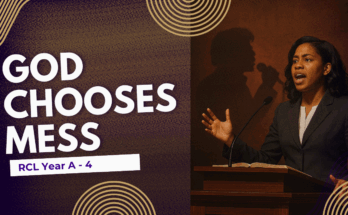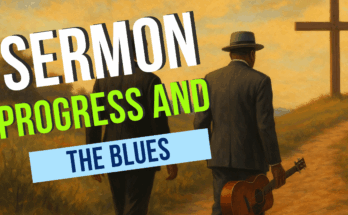As an Amazon Associate I earn from qualifying purchases.
The next pattern from Ronald Allen’s book Patterns for Preaching is Paul Scott Wilson’s approach described in his book The Four Pages of the Sermon The sermon under this structure is a manuscript with four distinct pages. Each page is a different approach to the materials. Each page is approximately 20-25% of the sermon.
Problem in the Text
The first page looks explicitly at the biblical text or the topic. Here we name the problem that gave rise to the text. Explicitly we summarize the manifestation of sin in the Bible world. We make sure to look at the text in a literary, historical, and theological mode so that the people clearly understand the text from all those different poles. That is a lot to do, but it greatly informs the congregation of the Biblical materials as well as the background behind the materials.
Problem in the World
The second page incorporates a move to the contemporary world. Here the preacher looks at issues in the present world that are similar to the problems that gave rise to the text. This is an interesting move that guarantees some “relevance.”
Gospel in the Text
The third page is another look at the text, but this time we look for good news in the text. Here we clearly identify what God is doing in the world of the Bible. We clearly show how God redeems the Bible world in the text.
Gospel in the World
The fourth page is a final return to the contemporary world. Here the preacher helps the people see and experience that same good news in today’s world. Then you make sure to help the people to continue to reflect on the sermonic ideas after leaving.
The preacher can mix up the pages if the preachers desires, but to follow this ordering makes a lot of sense. Also Wilson sees a direct correlation between the pages and sermon preparation. On Monday he researches the text and plans the sermon, on Tuesday he prepares page 1, on Wednesday he prepares page 2, on Thursday he prepares page 3 and on Friday he prepares page 4.
Evaluation
It is an explicitly theological approach that ends with the people clearly seeing God’s work on their behalf in the real world. In many of my sermons I have unknowningly roughly followed this pattern. Since I am in the Celebration tradition of Henry Mitchell, I do tend to add a celebration at the end of the sermon which is easily added to the end of this pattern.
It is a powerful pattern and I think that all should consider it for powerful Biblical preaching.
Amazon and the Amazon logo are trademarks of Amazon.com, Inc, or its affiliates.




